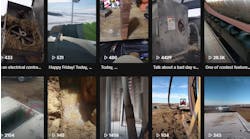What you do prior to entering a hazardous location is vitally important to your safety. Here are some things to keep in mind.
- Ensure any equipment you’re going to install is listed for the location.
- Use installation tools and methods that comply with Hazardous Location rules.
- Read and apply the MDS for ignitable chemicals in that location. Follow the requirements for ignition control and ventilation. Know how to handle and dispose of chemicals you intend to use.
- Present your work plan to the operator in charge. Ask if operations can change something to reduce your risk. For example, perhaps they can shut a process down for an hour or run the ventilation fans at full speed. Or they can advise you on the lowest risk window of time to enter the area.
- Before entering the location, know where the alarms, exits, eye washes, fire extinguishers, and other “use in an emergency” items are. Ask the operators to show you on a drawing of the location; verify once you are there.




